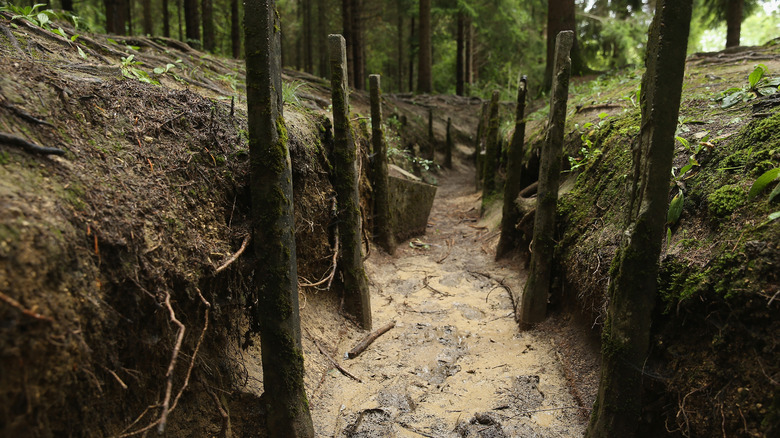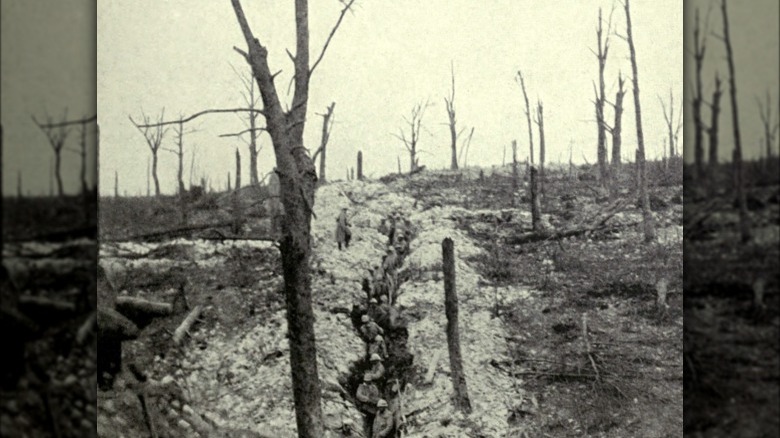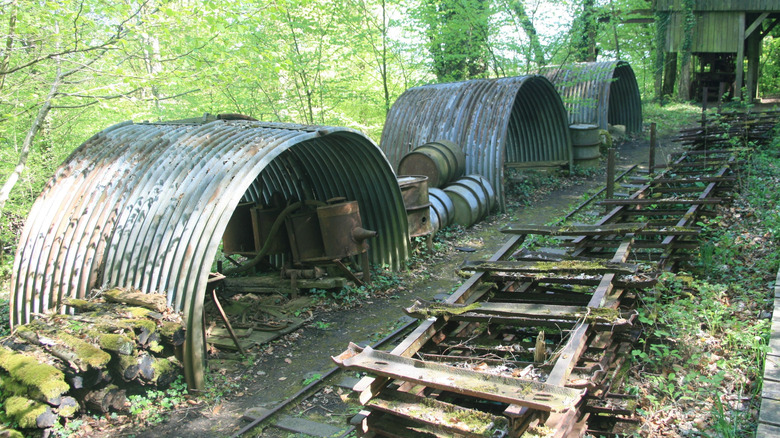This War-Torn Area In France Is One Of The Most Dangerous Places On Earth
In France, there is a region in Verdun known as Zone Rouge or the Red Zone. It was the site of World War I's Battle of Verdun that took place from February 21 to December 15, 1916 — the longest battle in modern history. The battle between the Germans and the French began as the Germans launched an attack at Verdun — a place that had sentimental value for the French people. Not only was the Battle of Verdun the longest, but it was also one of the bloodiest, as reported by War History Online. In the 10 months of continuous battle, the French lost about 377,200 soldiers while the Germans lost 337,000. Some reports indicate that the death toll is almost 1 million. Apart from the soldiers from both sides, civilians also died or were gravely injured.
More than a century has gone since the battle, but the region where it occurred is still considered a dangerous place to set foot on to this day. It remains undeveloped and is littered with overgrown trees. Although it's a historical site, visitors are strictly prohibited from entering Zone Rouge. The French government declared it unfit for development after the war, as there are still countless ammunition, unexploded shells, grenades, and other weapons left there (via Atlas Obscura). The government described the place as, "Completely devastated. Damage to properties: 100%. Damage to agriculture: 100%. Impossible to clean. Human life impossible."
What the Battle of Verdun was like
Before the Battle of Verdun, the area known as Zone Rouge today was once farmland. There was also a garrison that held thousands of men. Historian Christina Holstein, per National Geographic, described what it was like during the battle. " ... the shelling never stopped. Millions and millions and millions of artillery shells were fired." At the beginning of the battle, there were trenches used by soldiers, but as time went by, they were destroyed as well. "Any trees were smashed, and men took shelter where they could, in shell holes and in holes in the ground," Holstein said.
Both the Germans and the French used heavy artillery during the battle, and the area was decimated. According to History Rocket, some of the weapons used include machine guns, grenades, and even flamethrowers. In addition, the Germans also made use of about 60,000 gas shells called Green Cross shells, which consisted of pulmonary gas agents that affected a person's ability to breathe.
Zone Rouge Today
There is a small team of "démineurs" or minesweepers tasked to safely remove the weapons from the Zone Rouge, but it is highly unlikely that it be cleared enough for development or habitation. The team collects huge amounts of munitions, shrapnel, bullets, and chemical shells each year. Working on the site is a great risk, as chemicals have seeped into the soil. In fact, as reported by War History Online, a soil analysis was conducted on the area, and the results revealed up to 17% levels of arsenic on the ground. The result is not surprising considering chemicals used during the battle, but what's alarming is the levels go higher as the years pass. Additionally, the water remains highly contaminated with arsenic, and the results are described as 300 more than what experts say is the "tolerable" level.
According to reports, what poses more dangers are not the explosive weapons; rather, it's the gas shells that remain in the area. The removal team has to undergo regular check-ups to keep their health in check. However, it may take some time for the toxins to build up in the body, and by the time it's detected, it may be too late. Historian Christina Holstein believes that Zone Rouge will never go back to its former state. They reckon that they have 300 years work ahead of them before they have cleared the whole battlefield. And they never will," she told National Geographic.


